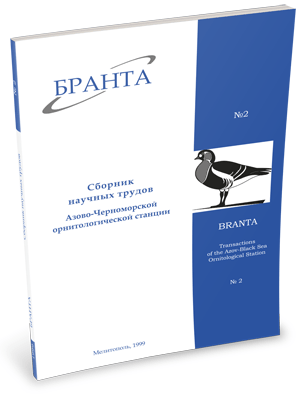
Transactions
of the Azov-Black Sea Ornithological Station



Feeding links of Long-eared Owl as indicators in ecological and epizootological studies
I.T.Rusev, S.F.Satzyk.
It is known, that the number of predatory' birds in the certain territory can serve a good indicator of number of their prey (Rusev, Soloviev, 1986). It is characteristic both for day time predatory birds and for owls. Among numerous studies of owl diet the basic analysis of pellets takes the leading place. Along with some restrictions it allows expanding of both the temporal and spatial scope of the research and avoiding killing of birds themselves. This advantage is especially dear when there is an agent need to get information from hot-beds of dangerous diseases such as tularaemia. In such cases the pellets of predatory birds, especially of Longeared Owl (Asіо otus L.), are the cheapest by access and informative by data.
A total of 1163 pellets were analysed in a laboratory. Fur and feathers were separated from the bones. Identification of prey species was done on the basis of skulls. Fractions per prey species were further analysed in a bacteriological laboratory. In winter period just a few species of small mammals and birds comprise basic diet of Long-eared Owl on the Northwestern coast of the Black Sea. The first included: Apodemus sylvaticus L., Mus musculus L., Mus specilegus Pet, Micromys minutus Fall., Apodemus agrarius Pall., Arvicola terrestris L., Microtus arvalis Pall., Cricetulus migratorius Pall., Rattus norvegicus Berk., and 3 species of Insectivora – Sorex minutus L., Sorex araneus L., Crocidura suaveolens Pall. Birds were represented by families Fringillidae, Paridae, Turdidae, which were not identified to species.
Number of certain rodents did correspond to the abundance of their remains in the pellets of Long-eared Owl. Birds were shown to easily switch to the most numerous and available food. 'The fact that owls were clearly selective towards infected animals helped not only to quickly estimate their numbers, but also to get up-to-date information on the spatial scope of the tularaemia hot-beds.
Read the paper in a PDF file